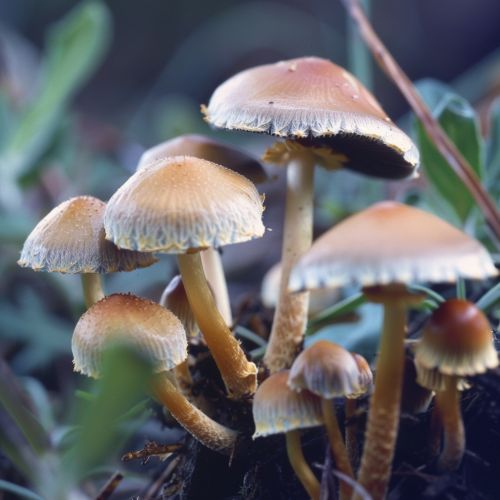Agaricaceae
Overview
The Agaricaceae are a family of basidiomycete fungi and comprise about 85 genera and 1340 species. This family is in the order Agaricales, the gilled mushrooms. The family, also known as the true mushroom family, includes both edible and poisonous species, as well as a large number of fungi with little or no economic importance.


Description
Members of Agaricaceae are characterized by having a basidiocarp that is large to medium-sized, with a pileus (cap) and stipe (stalk). The pileus is typically umbrella-like or fan-shaped and has gills (lamellae) on the underside, from which the spores are shed. The spores are typically brown in color and are produced on a specialized cell called a basidium.
Distribution and habitat
Agaricaceae are cosmopolitan, occurring in all types of ecosystems, including grasslands, forests, and deserts. They are most commonly found in temperate and tropical regions. They are saprophytic, decomposing organic matter, but some species are also ectomycorrhizal, forming mutualistic relationships with plants.
Classification
The family Agaricaceae was first described by French botanist François Fulgis Chevallier in 1826. The classification of species within the Agaricaceae has been subject to considerable change and is still not settled. Molecular studies have shown that the traditional morphological classification schemes do not accurately reflect the natural relationships of the species.
Notable genera and species
Among the notable genera in Agaricaceae are Agaricus, Lepiota, and Macrolepiota. The genus Agaricus includes Agaricus bisporus, the button mushroom, which is the most commonly cultivated mushroom in the world. The genus Lepiota includes several poisonous species, such as Lepiota brunneoincarnata. The genus Macrolepiota includes Macrolepiota procera, the parasol mushroom, which is a popular edible species in Europe.
Economic importance
Many species of Agaricaceae are of economic importance. Some are cultivated for food, such as the button mushroom (Agaricus bisporus), while others are collected from the wild for food, such as the parasol mushroom (Macrolepiota procera). Some species are used in traditional medicine, such as Agaricus blazei, which is used in Brazil and Japan for its purported health benefits. However, some species are poisonous and can cause serious illness or death if consumed.
Conservation
Conservation of Agaricaceae species is important due to their role in ecosystem functioning. They contribute to nutrient cycling by decomposing organic matter and some species form mutualistic relationships with plants, aiding in nutrient uptake. However, many species are threatened by habitat loss due to deforestation and urbanization.
